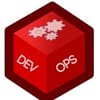Java is a popular programming language, and as such there are many open-source Java build tools available. This article looks at 4 of the most popular Java build tools.
It also covers when you should use each tool in development. Finally, it provides some helpful tips on how to get started using these tools effectively.
A lot of engineering teams are using Java Build tools to automate their build processes. This article will look into popular and widely used open-source Java build tools with their pros and cons.
What is a Java Build Tool?
A java build tool is a program or command-line utility that automates the process of compiling, assembling, and deploying software.
Build tools are often used to automate processes such as building an application binary from source code
Build tools are not only limited to just compiling code, they can also help with the following: package management, dependency handling, and in continuous integration pipelines.
When it comes to continuous integration build tools play an important part in building and packaging the source code by handling all the dependencies.
Best Open Source Java Build Tools
Following is the list of Open source Java Builds.
- Apache Maven
- Ant with ivy
- Gradle
- SBT
Apache Maven
Maven Website: maven.apache.org
One of the most popular is Maven, which was originally developed in 2001 and has since been adopted as the de facto standard for building Java projects.
Maven's scalability and extensibility make it an attractive choice for small development teams who need automated builds but don't have a lot of resources allocated toward software engineering overhead.
You can get started by installing maven.
Gradle
Official Website: gradle.org
Gradle is built upon the concepts of ant and maven. Gradle uses Groovy scripts for declaring the project configuration. Gradle was designed for multi-project builds and supports incremental builds by determining which parts of the build are up-to-date.
Ant is mostly treated as a legacy right now. Industry going forward with Gradle build tool. I personally feel, Ant and Maven still we can use it, it mainly depends on the project. Sometimes we can use a combination of Ant and Gradle, Maven and Gradle, or even three together.
SBT
Official Website: scala-sbt.org
SBT is a Scala-based build tool. It's considered to be among the most popular Java Build Tools. Sbt has many plugins and allows developers to easily create their own custom tasks for specific purposes.
The SBT can execute projects in multiple JVM languages, including Ruby and JavaScript.
One of the main benefits of using SBT with a java project is that it can automatically download the dependencies and set up a development environment
SBT for java has many plugins which are contributed by third-party developers.
Apache Ant with ivy
Official Website: ant.apache.org
Ant is a java library, which helps to drive the process defined in the build file.
Mainly Ant is used to build java applications. Ant is very flexible; it does not impose any rules like coding conventions, or directory structure. Ivy is a subproject of Ant, which acts as a dependency manager.
Here you can refer to some ant scripts: Ant Scripts
What is the Need for Java Build Tools?
The answer to this question is simple: if we are not automating our build processes then we will be spending more time doing manual work.
We can say that a build tool should automate the process of compiling, packaging, and deploying an application.
ANT vs Maven
Let me share with you some of the important differences between ANT and Maven.
- ANT - we need to provide information about the project structure whereas Maven has a convention to place source code, compiled code, packages, etc., So for Maven, we do not need to provide information about the project.
- Maven has a life cycle of the build process, whereas ANT does not.
- Maven is a framework and Ant is just a tool.
- Ant is mainly for building tools and Maven is mainly a project management tool.
- Ant is less preferred and Maven is more preferred than Ant.
Maven vs Gradle
Let me share with you some of the important features or reasons, which Gradle is having and Maven does not. These features promoting Gradle to choose over other build tools.
- When it comes to performance, Gradle has features like Incremental build and Compiler Daemon, which increase dramatic speed and reduced build time.
- Ant integration with Gradle works very well.
- Google adopted Gradle as the default build tool for android projects. so Gradle has more support for better building Android projects.
- Gradle releases a new version usually every 6 to 8 weeks and adds new features every release.
For a more detailed comparison between Maven and Gradle. Please refer to this link.
Conclusion
In this article, we have learned about some of the popular open-source java build tools. Of course, selecting a build tool for your java projects depends on your choice. If you have any queries regarding the build tools, leave a comment below.
Also, in terms of DevOps, it is very important to know about build tools. Check out the DevOps Engineer guide to know more.


